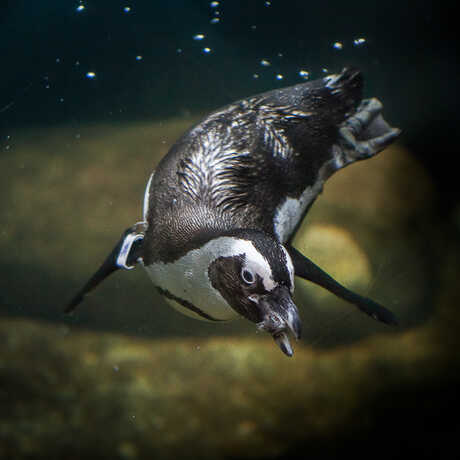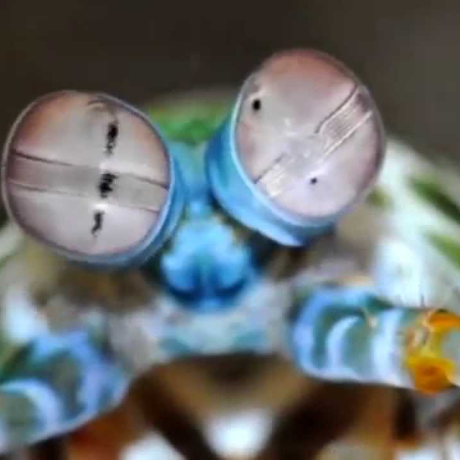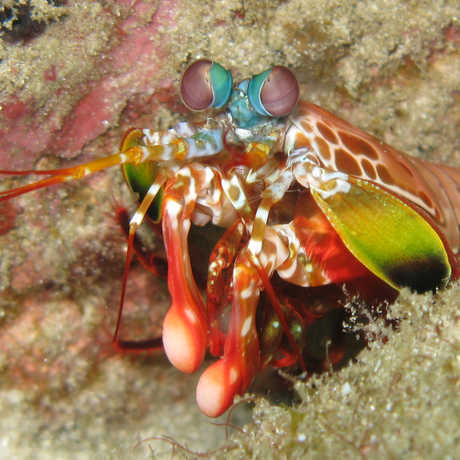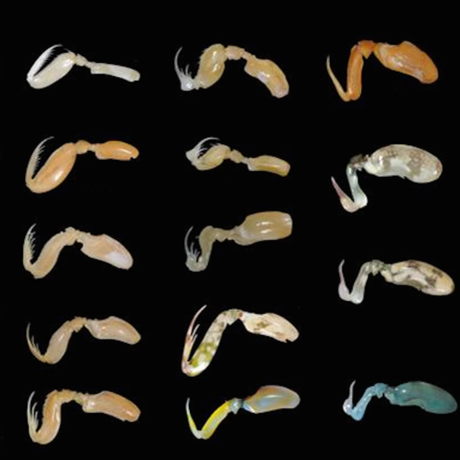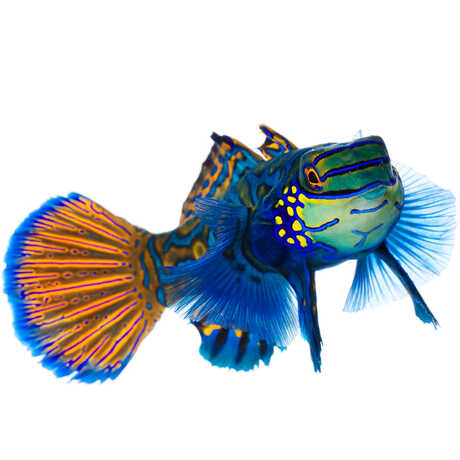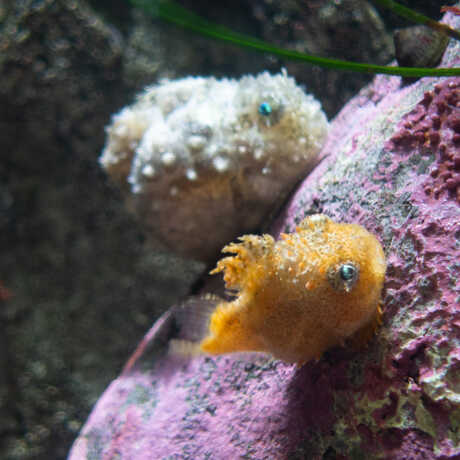Peacock Mantis Shrimp
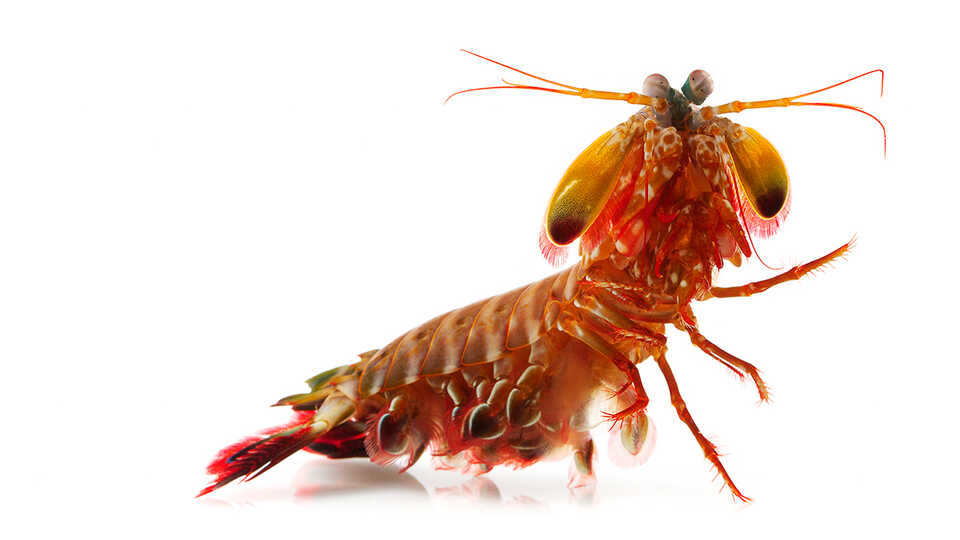
Please note: This animal is not currently on exhibit.
Don’t be fooled by its small size—the peacock mantis shrimp (Odontodactylus scyllarus) packs a powerful punch. Armed with hammer-like claws called dactyl clubs, it delivers blunt-force blows to break apart the shells of mussels, clams, and other prey, allowing it to feast on the soft tissue inside. With a striking speed of more than 50 miles per hour and the ability to inflict up to 160 pounds of instantaneous force, this colorful crustacean can even crack aquarium glass—sometimes with a single blow. (That’s one reason the Academy’s peacock mantis shrimp is safely housed in a shatter-proof acrylic tank.)
Scientists recently learned the secret to this shrimp’s super power by using electron microscopy and several different x-ray technologies to analyze the structure and composition of its clubs. The tests revealed that the outer layer of each club is made of hydroxyapatite, an extremely hard mineral also found in human teeth and bones. On its own, this material would likely fracture on impact, but beneath the hard coating lie many layers of a much more elastic material—a compound called chitin commonly found in the exoskeletons of insects and other crustaceans.
The shrimp's club is further protected by the fact that each successive layer of chitin is rotated slightly from the one above it, making it so difficult for cracks to spread. Indeed, measurements indicate that the peacock mantis shrimp’s clubs are much stronger and tougher than any synthetic composite material—a finding that has inspired some researchers to try to replicate its structure to create better body armor.
Range
The peacock mantis shrimp inhabits an area of the Indo-Pacific Ocean ranging from the south of Japan to north of Australia, and in between Guam and East Africa.
Lifestyle
Mantis shrimp mate, spawn, and hatch their eggs in U-shaped burrows at the base of coral reefs, making their reproductive processes difficult to observe. The peacock mantis shrimp is mostly monogamous, although they have been known to stray occasionally. They can live in pairs for an entire lifetime, which spans four to six years.
Phylogeny
The peacock mantis shrimp is neither mantis nor shrimp—it’s a stomatopod, a type of marine crustacean. There are around 450 known species of mantis shrimp, each classified as either a “stabber" or “smasher” depending on how it uses its appendages.
Ocular Prowess
We now know that despite their twelve photoreceptors, mantis shrimp can't actually discriminate between colors as well as humans can. But these same photoreceptors do enable them to see UV, infrared, and polarized light.
Be mesmerized by colorful coral reef fish, soaring stingrays, and adorable African penguins—streaming live to your device, 24/7.
